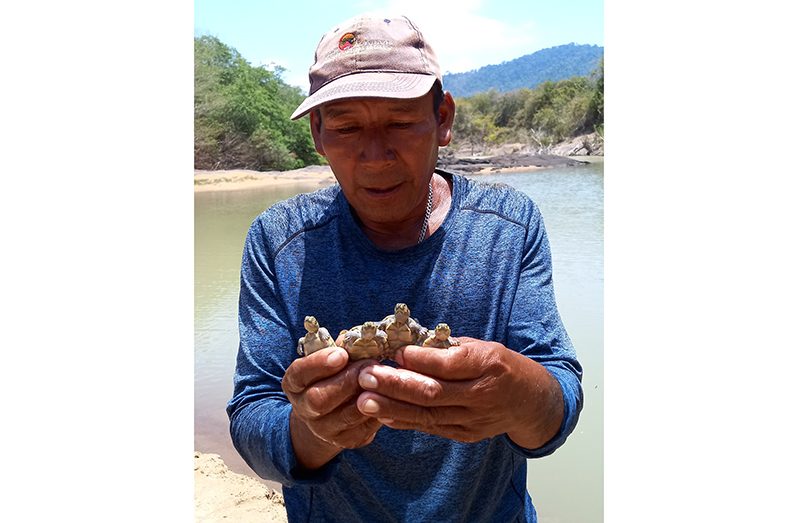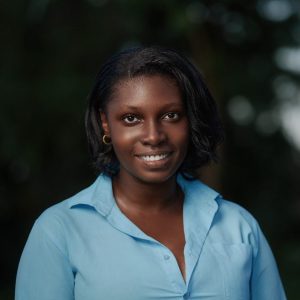IN the Rupununi, at the very heart of Guyana’s untouched biodiversity, an incredible team of indigenous men and women is doing more than conservation.
The South Rupununi Conservation Society (SRCS) is one of Guyana’s most inspiring conservation efforts, aimed at working with villages in the Rupununi to keep the wildlife intact for generations to come. By collaborating with the people of the Rupununi, the SRCS is using a unique approach which sees traditional knowledge and scientific research combine to protect the endangered species of the Rupununi.
Kayla de Freitas, Programme Manager of the SRCS, spoke to the Pepperpot Magazine about the establishment of the society, which has its beginnings going as far back as the 1990s. The initiative began at the community level when the people of the Rupununi noticed a decline in the thriving ecosystems in their home. As she stated, “As community members noticed the decline of wildlife and other changes impacting their way of life, they recognised the need for a grassroots approach to conservation. By officially registering as a Friendly Society in 2003, they aimed to foster community-led conservation efforts, empowering local people to take charge of protecting their natural resources and addressing the challenges they faced. This community-driven model has been central to the SRCS’s mission and effectiveness.”
The community still plays an integral role in the venture today, with even more communities and locals getting involved. The idea behind the society is simple, says Kayla: sustainable conservation by creating systems that would continue to garner support. As she stated, “The impact the SRCS wishes to see is, first off, the long-term sustainability of biodiversity and ecosystems in the South Rupununi. We would like to have strengthened community resilience to environmental challenges and climate change, and empowerment and ownership of conservation initiatives among Indigenous communities and other local peoples in the region.”

One of the things that stands out about the SRCS is the fact that it is something done for the Rupununi, by the Rupununi, having some 150 registered members and reaching hundreds more across 12 communities. The majority of its members, executives, and staff are Indigenous themselves, and most of the projects are spearheaded by the people of the Rupununi. Kayla shared that each project is a collaborative effort involving villagers, community leaders, local governing bodies, and the occasional other conservation society. “Communities themselves are members of the SRCS, but the executive also actively engages communities in all decision-making processes and always incorporates traditional and local knowledge into the conservation strategies,” she said. “The SRCS believes that as Indigenous peoples rely directly on the environment, the people who live in these lands should have the right to initiate projects that align with their bigger environmental management goals.”
The vast savannahs of the Rupununi are home to some of Guyana’s rarest animal species, some of which are unique to Guyana. These are what Kayla says the SRCS is working to keep safe. “Our flagship species, the bird that we have focused on for over 20 years, is the endangered Red Siskin. We are also working on setting up protections for the Rio Branco Antbird and the Hoary-throated Spinetail – which are two critically endangered birds. We also have active programmes focused on anteaters, armadillos, yellow-spotted river turtles, and rabbits,” she said.

According to Kayla, the Rupununi and the rest of Guyana are home to a wide array of undiscovered and endangered animals. The SRCS hopes to extend their reach to more communities and people. In the meantime, however, they have made massive strides in protecting and promoting the Red Siskin, a rare species that was brought back from near extinction by the team at the SRCS. “I’d say that the Red Siskin programme has been very successful – here was a small, fiery bird on the brink of extinction, and here was a small group of friends who chose to protect this bird. Through education and awareness, community engagement, lobbying for legal protection, and tourism interest in the bird, communities were able to see the value of conservation. It was not easy, but the long-term, community-led, and consistent approach helped. It is easy to define it as a success now, but it was a long road with a lot of passion and love for community and the environment, a lot of volunteering, and a lot of understanding.” She further added that, “Success is difficult to define, but we remain committed to a holistic approach that tries to show how conservation, education, research, and livelihoods can be linked.”
The SRCS has faced some challenges in their ambitious endeavours, with the biggest being funding and resources. As Kayla shared, “A lot of funding comes through grant cycles, and we do not have consistent support for our core administration. Many dedicated individuals volunteer their time and energy, driven by their passion for their communities, wildlife, and the environment, but they also have personal needs to address. Retaining human resources becomes difficult as they balance these responsibilities.”
It could be easy for people to miss the subtle changes in their environment and underestimate the importance of conservation efforts. This significance is also something the SRCS is working to educate people on, lobbying for the message that our ecosystems have a big part to play for everyone. “It can be a struggle to help others recognise the value of conservation when they are focused on survival. It’s crucial to demonstrate that our fates are interconnected, particularly in the context of climate change. While local efforts can be made, the broader systemic issues—such as pollution, deforestation, and environmental changes—seem overwhelming. After all, how can you tell the sun not to shine so brightly? Climate change is a complex challenge that cannot be easily tackled at the local level.”

The countless projects put forward by the SRCS are not random; these in-depth and diverse efforts are based on scientific studies and research. This is where the people of the Rupununi play a significant role, with their knowledge and understanding of the community being vital to researchers. As Kayla explained, “Many of our conservation strategies begin with research that blends scientific methods with traditional knowledge. While scientific data provides valuable metrics, local insights offer a deeper understanding of the context and nuances of the environment. Each of our projects incorporates both scientific research and traditional methodologies, ensuring a holistic approach to conservation. This combination enriches our efforts and leads to more effective and culturally relevant outcomes.”
Measuring the true impact of the SRCS is quite challenging, as many of the outcomes will only become evident over time. At this stage, key indicators of progress include community interest, active support, and engagement alongside long-term goals such as increasing species populations or reducing habitat destruction. As a relatively young organisation, the team is in the process of establishing systems, after 20 years of groundwork, to effectively monitor and measure these impacts in the future. Moving forward, Kayla says the SRCS hopes to grow with their core values at heart. “We currently have a diverse focus with four main areas: community livelihoods, research and conservation, education and awareness, and cultural heritage. Each of these areas has active programmes, and they are closely interrelated, working together to support our overall mission. As we move forward with our 10-year strategy, we aim to develop these areas further while ensuring our growth remains manageable, allowing us to make a real, sustainable impact,” she said.



.jpg)








